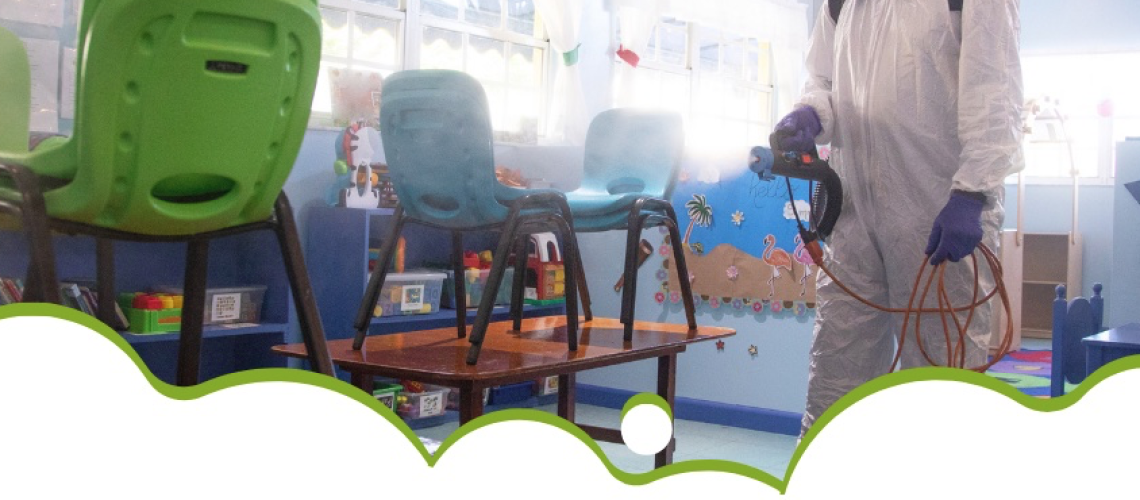Cleaners and disinfectants can contain chemicals that harm brain health, are linked to reproductive harm, and/or other health problems. The good news is that safer alternatives for cleaning and disinfecting against COVID-19 are available.
Surfaces should be cleaned first, before disinfecting (learn helpful techniques in our webinar above). To find safer disinfectants, look for active ingredients including alcohol/ethanol/isopropanol, hydrogen peroxide, thymol, L-lactic acid and citric acid. Products with these ingredients are on the Environmental Protection Agency’s list of approved disinfectants against COVID-19, and they are by far much safer than chlorine, ammonia and quats. When cleaning or disinfecting, use gloves to protect your hands. Ventilation (opened window) is especially important for stronger chemicals.
For washing your hands, plain soap and water is just as effective as antibacterial soaps. Both the Center for Disease Control (CDC) and the Food and Drug Administration (FDA) agree that there is no added benefit to antibacterial soaps, so skip them and use plain soap (and avoid those phthalates often hidden under “fragrance” which are linked to neurological harm).
When it comes to foggers, misters and electrostatic sprayers, there are lots of misleading claims. There is no science available that has measured how long disinfectant particles stay suspended in the air after spraying. There is no science available showing that transmission is reduced or eliminated in rooms that have been disinfected. Misting and fogging does increase cleaning costs and chemical exposure without any proven health benefits. Even worse, misting and fogging could create a false sense of security, leading to less adherence to other preventive measures. Finally, neither the U.S. Centers for Disease Control (CDC) nor the World Health Organization (WHO) support the use of foggers or misters for disinfection. Special thanks to Alexandra Scranton of Women’s Voices for the Earth and Betty Riggin for co-presenting this webinar.
Key resources we highlighted in our webinar:
- Our LDA related websites: this Healthy Children Project includes lots of great resources including our Covid pages, protect your family page and for general information on learning disabilities and educational resources, check out our Learning Disabilities Association of America’s website
- Safer Disinfectant Use during the COVID-19 Pandemic (PDF) Guidance by Western States Pediatric Environmental Health Specialty Unit
- Women’s Voices for the Earth’s coronavirus resources page with factsheets and links to helpful resources on safer disinfection.
- Women’s Voices for the Earth’s factsheet on concerns with foggers and misters:
- CDC guidelines on Environmental Fogging
- CDC resources on coronavirus including their cleaning and disinfecting your home page and they have lots of print friendly pdfs on lots of COVID-19 topics
- City of San Francisco database: Safer COVID-19 cleaning products and disinfectants
- World Health Organization guidance on cleaning and disinfection during COVID
- EPA List N: Disinfectants for Use Against SARS-CoV-2 and how to use it (cool hint, click on the little up arrow to the right of active ingredients to sort by ingredient, or can do the same for company or other column headers)
- Look up your cleaners on Environmental Working Group’s Guide to Healthy Cleaning
- Healthy Schools Network has many resources on cleaning and their Healthy Schools Day 2020 is focused on the coronavirus.
- Made Safe has a great washing your hands blog and other resources like the cleaning products they certified
- Vox video on how soap kills the coronavirus (with proper technique)
- What’s the best material to make masks out of for DIY masks article by New York Times
- Beyond Pesticides disinfectants and sanitizers information
- The Role of Dry Winter Air in Spreading COVID-19 article
- Poison control website
- Helpful explanation of what a virus is from a New York Times article “How Coronavirus Hijacks Your Cells”
- Air pollution and coronavirus article by Environmental Healthy News
Some additional points and resources cited in the webinar:
- New England Journal of Medicine study on COVID-19 on surfaces. This may sound scary, but John Hopkins Hospital experts explained it this way: yes the virus can live for 72 hours on plastic but what’s more important is the amount of virus that remains over time.
- In light studies about the significant number of people who are asymptomatic or have mild symptoms, the CDC in April 2020 started recommending wearing masks especially in areas with significant community-based transmission.
- New studies show masks protect the wearer as well as those around them, according to the CDC.
- In terms of hydrogen peroxide, CDC says it deactivates rhinovirus which is harder to kill than this coronavirus.
- There have also been successful tests of hydrogen peroxide and alcohol on other human coronaviruses, Not COVID-19 yet, but SARS and MERS and similar viruses, according to recently published paper by Kampf.
- Study that looked at the effectiveness of 0.5% hydrogen peroxide against other human coronaviruses (like SARS and MERS) and found it was effectively killing those in one minute of dwell time. To kill rhinovirus, leave hydrogen peroxide on longer (8-10 minutes).
Please also check out our general coronavirus page with more resources, including mental health and educational resources.
You can view our original Safer Cleaning at Home webinar from April 2020 below.


